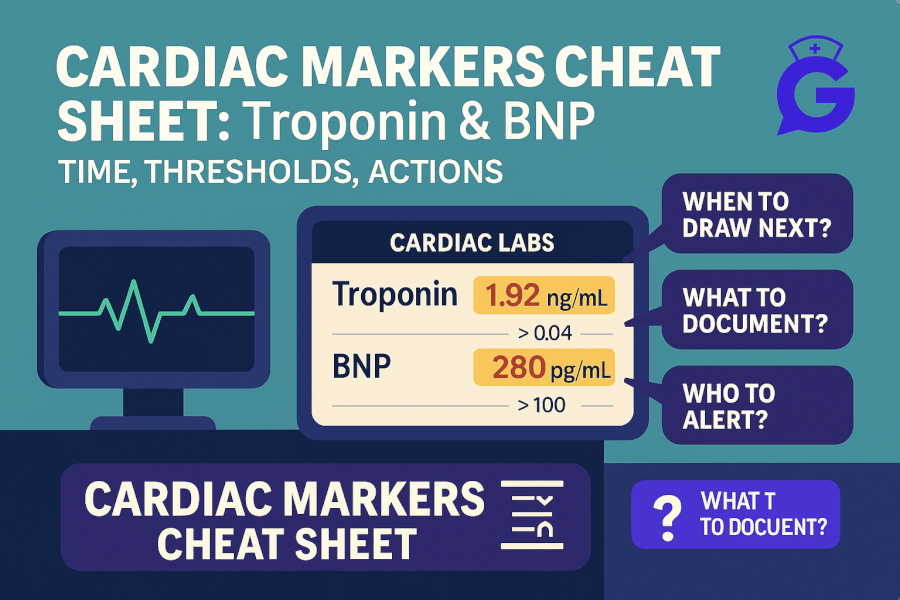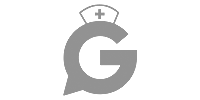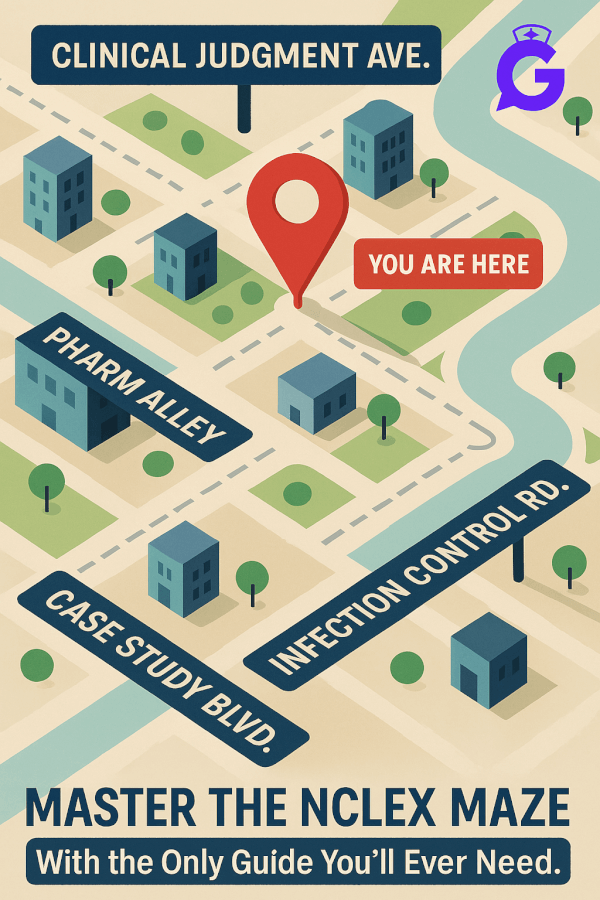Vital Organs You Need to Know for the NCLEX (2025)
The National Council Licensure Examination (NCLEX) is a crucial step for aspiring nurses to demonstrate their readiness to provide safe and effective care. One of the key areas of knowledge required for the NCLEX is a solid understanding of the human body's vital organs.
This guide covers the most important organs—heart, lungs, brain, liver, and kidneys—from a nursing perspective. We’ll break down how each is tested on the NCLEX, what to watch for in clinical situations, and what kind of questions you might see.
Want to brush up on the basics first? Check out 25 Essential Words to Know Before the NCLEX.
🫀 The Heart
The heart pumps blood throughout the body, delivering oxygen and nutrients while removing waste products. It consists of four chambers and is regulated by an electrical conduction system.
What Nurses Need to Know:
- Common cardiac conditions: MI, CHF, arrhythmias
- Nursing assessments: apical pulse, edema, BP trends
- ECG interpretation basics: normal sinus rhythm, ST elevation, AFib
- Priority interventions for chest pain: MONA (Morphine, Oxygen, Nitrates, Aspirin)
NCLEX Scenario:
A patient is admitted with chest pain and ECG shows ST elevation in leads II, III, and aVF. What is your first nursing action?
- A. Prepare for defibrillation
- B. Administer morphine
- C. Place the patient in Trendelenburg
- D. Check a troponin level
Correct Answer: B. Morphine is part of initial MI care (MONA).
Clinical Case Study:
Mr. Lopez, age 68, presents with fatigue and shortness of breath. You hear crackles in the lungs and note bilateral pitting edema. His BNP is elevated, and EF is 35%. What are your top 3 nursing priorities?
- Administer prescribed diuretics
- Elevate the legs and monitor intake/output
- Educate on sodium restriction and daily weights
🧠 Tip: Know how to differentiate left-sided vs. right-sided heart failure—a common NCLEX topic.
📘 Related: 25 NCLEX Study Tips That Actually Work
🫁 The Lungs
The lungs are responsible for gas exchange: oxygen in, carbon dioxide out. They're divided into lobes (3 on the right, 2 on the left).
What Nurses Need to Know:
- Respiratory diseases: COPD, pneumonia, asthma
- Nursing assessments: lung sounds, O2 sat, tripod positioning
- Interventions: incentive spirometry, oxygen therapy, suctioning
- ABG interpretation (especially pH, CO2, HCO3)
NCLEX Scenario:
A patient with COPD has a pH of 7.32 and a PaCO2 of 55 mmHg. What is the acid-base status?
- A. Metabolic alkalosis
- B. Respiratory acidosis
- C. Respiratory alkalosis
- D. Metabolic acidosis
Correct Answer: B. Elevated CO2 and low pH = respiratory acidosis.
Clinical Case Study:
Mrs. Chen, age 70, arrives with confusion and productive cough. O2 sat is 89% on room air. Auscultation reveals crackles in the lower lobes. What are your initial steps?
- Apply 2L O2 via nasal cannula
- Obtain sputum sample
- Administer prescribed antibiotics and monitor response
Mnemonic for early hypoxia: "RAT" — Restlessness, Anxiety, Tachycardia
📘 Also helpful: Different Types of NCLEX Questions
🧠 The Brain
The brain controls body functions, including thought, coordination, and vital signs. It’s divided into the cerebrum, cerebellum, and brainstem.
What Nurses Need to Know:
- Neuro conditions: stroke, TBI, seizures, increased ICP
- Assessments: GCS (Glasgow Coma Scale), PERRLA, motor strength
- Priorities: maintain cerebral perfusion, elevate HOB, seizure precautions
- Warning signs of stroke: FAST (Face, Arms, Speech, Time)
Quick Tip:
Know the Glasgow Coma Scale (GCS) components: eye opening, verbal response, and motor response. A GCS < 8 usually means intubation.
Clinical Case Study:
Mr. Jackson, 59, is brought to the ED with slurred speech and right-sided weakness. CT confirms ischemic stroke. What's your immediate nursing role?
- Keep HOB elevated to 30 degrees
- Monitor neuro status every hour
- Prepare for tPA administration per protocol
Use therapeutic communication techniques for stroke patients with aphasia—explained in Therapeutic Communication Tips.
🧬 The Liver
The liver detoxifies blood, synthesizes proteins, and helps in digestion.
What Nurses Need to Know:
- Conditions: hepatitis, cirrhosis, liver failure
- Signs: jaundice, ascites, asterixis, elevated LFTs (ALT/AST)
- Priorities: monitor ammonia levels, fall risk, skin care
- Meds to avoid: acetaminophen, sedatives, NSAIDs
Key Labs:
- AST/ALT > 40 = liver injury
- Ammonia > 45 = risk for encephalopathy
- Albumin < 3.5 = poor protein synthesis
Clinical Case Study:
Ms. Rivera, age 50, with a history of alcohol use presents with jaundice and lethargy. Her ammonia is 87. What is your next move?
- Administer lactulose as ordered
- Monitor for signs of hepatic encephalopathy
- Implement fall precautions and assess mental status frequently
Mnemonic for cirrhosis complications: "THE LIVER IS SCARRED" — Thrombocytopenia, Hepatic encephalopathy, Edema...
📘 Mnemonics like this? See 25 Nursing Mnemonics for Complex Concepts
🩺 The Kidneys
The kidneys filter waste and regulate fluid, electrolyte, and acid-base balance.
What Nurses Need to Know:
- Conditions: AKI, CKD, nephrotic syndrome
- Labs: BUN, creatinine, GFR, urine output (<30 mL/hr is a red flag)
- Interventions: fluid restrictions, monitor electrolytes (esp. K+), prepare for dialysis
- Drugs: careful with nephrotoxic meds (vancomycin, contrast dye)
Clinical Tip:
Always report:
- Urine output < 30 mL/hr
- Potassium > 5.0 mEq/L
- Creatinine > 1.3 mg/dL
Clinical Case Study:
Mr. Hughes, 76, is on gentamicin for sepsis. You note he’s only voided 200 mL in 12 hours. Creatinine is 2.1. What's your role?
- Notify provider immediately
- Monitor for further signs of AKI
- Ensure patient is well-hydrated and discontinue nephrotoxic meds if ordered
📘 Related: NCLEX Categories Explained
✅ Final Tips for NCLEX Organ System Mastery
Here’s a quick checklist of red flags by organ:
| Organ | Red Flag Signs | Labs to Watch |
|---|---|---|
| Heart | Chest pain, SOB | Troponin, BNP |
| Lungs | O2 sat < 90%, wheezing | ABG, pH, CO2 |
| Brain | GCS < 8, unequal pupils | ICP, GCS |
| Liver | Jaundice, confusion | ALT/AST, ammonia |
| Kidneys | Low UO, edema | BUN, Creatinine |
- Create flashcards for each organ with conditions, labs, meds, and red flags
- Use GoodNurse.com to drill categories and vocab
- Practice case studies to integrate patho + nursing priorities
- Review labs and interventions daily in your final review week
💡 Want a deeper dive? Start with our full NCLEX study guide and plan your schedule week-by-week.
Understanding the vital organs and their functions is not just NCLEX content—it’s core to becoming a safe and effective nurse. Focus on conditions, labs, symptoms, and interventions tied to each system.
You’ve got this. 🚀







